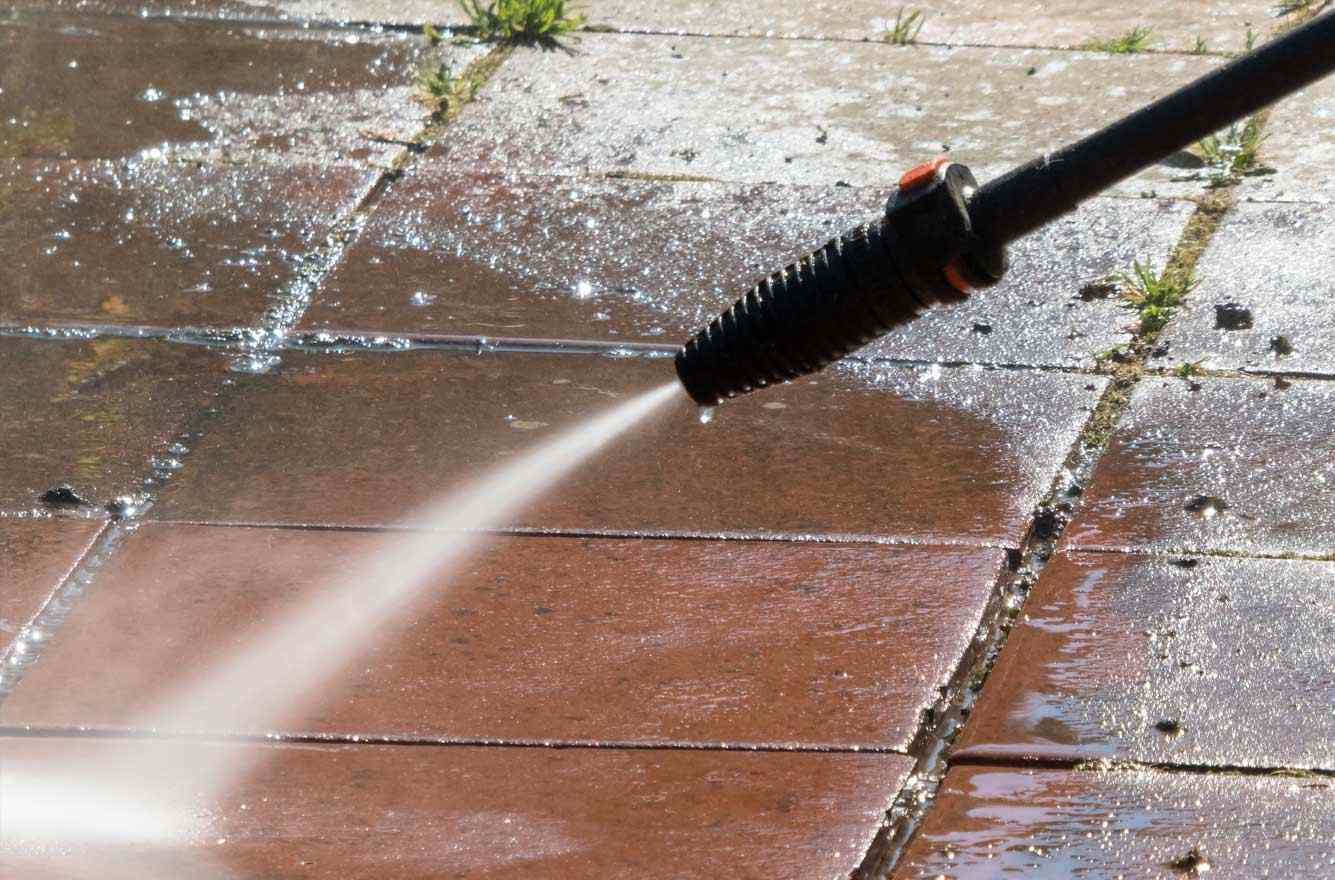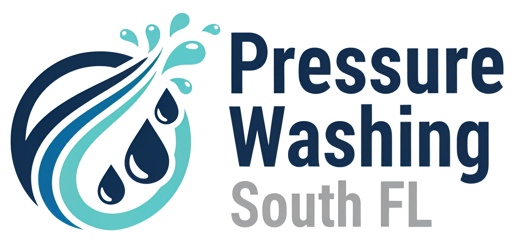5 Pressure Washing Mistakes That Cost South Florida Homeowners
Avoid costly pressure washing damage. Learn the 5 biggest mistakes South Florida homeowners make & how professionals prevent expensive repairs.

Quick Navigation
Pressure washing looks simple. Point. Pull trigger. Watch dirt disappear. That's what people think before renting a machine from Home Depot.
Then the problems show up. Siding cracked straight through. Windows with broken seals. Paint stripped to bare wood. Dead plants everywhere. Water pooling inside walls. What should cost $300 for professional house washing turns into $5,000 in repairs.
I've seen this dozens of times across Miami-Dade, Broward, and Palm Beach Counties. People try to save $400 and end up spending $4,000 fixing damage.
Here are the five mistakes that cost the most money.
Mistake #1: Using Too Much Pressure
Rental washers run at 3,000 to 4,000 PSI. That's enough to cut through wood. Shatter windows. Blast holes in vinyl siding. People don't realize how much damage this causes until they're looking at the results.
Common Damage from Excessive Pressure
- • Vinyl siding cracked or punctured (full panel replacement needed)
- • Wood surfaces splintered and gouged beyond repair
- • Window seals broken, causing leaks and fog between panes
- • Paint stripped down to bare wood or concrete
- • Concrete etched with permanent wand marks
- • Stucco damaged with visible pitting and lost texture
What Actually Happens
Water at 3,000 PSI acts like thousands of tiny knives. It removes dirt, but it also removes what's under the dirt. On vinyl siding it forces water behind panels where it soaks insulation and drywall. On wood decks it tears out the soft grain between harder rings, leaving permanent furrows you can see and feel.
South Florida makes this worse. The humidity already stresses exterior surfaces. High-pressure water accelerates damage that would normally take five years and compresses it into five minutes.
Professional Solution
We adjust pressure for each surface. House washing uses soft wash methods under 500 PSI with specialized cleaners. Concrete driveways can handle 3,000 PSI. Vinyl siding cannot. Knowing the difference prevents damage.
Mistake #2: Wrong Cleaning Solutions
Bleach. That's what DIYers use. They pour it straight from the jug into the tank and spray everything. Then they wonder why the landscaping turned brown overnight and the $300 hibiscus is dead.
Different surfaces need different chemicals. Some don't need chemicals at all. Using the wrong solution doesn't just fail to clean. It causes permanent damage.
Wrong Chemical Choices
- • Straight bleach kills plants and grass
- • Acidic cleaners etch concrete and natural stone
- • Alkaline solutions strip paint and finishes
- • Mixed chemicals create toxic fumes
- • Wrong concentrations leave residue or don't clean
Professional Approach
- • Biodegradable surfactants for most surfaces
- • pH-balanced solutions for specific materials
- • Pre-wetting and protecting landscaping
- • Proper dilution ratios for each application
- • Post-treatment neutralization when needed
The South Florida Chemical Challenge
The climate here creates problems. Mold and mildew grow constantly in 80% humidity. Salt air corrodes metal and concrete near the coast. Algae spreads across everything. Regular household cleaners weren't made for this.
Professional pressure washing services use cleaners made for Florida. They kill mold at the root, prevent regrowth for months, don't harm surfaces or plants.
Cost of Getting It Wrong
Replacing landscape plants: $500-$2,000. Refinishing damaged wood: $1,500-$5,000. Repainting stripped siding: $3,000-$8,000. Professional cleaning: $300-$800.
Mistake #3: Improper Technique
There's a right way to move the wand. Most people don't know it. They spray random patterns. Hold the nozzle too close. Linger in one spot too long. Use the wrong angle. All of these leave visible damage.
Streaking and Uneven Cleaning
The obvious sign is streaks. Dark lines where dirty areas stayed dirty. Light lines where clean spots show against surrounding grime. Tiger striping on driveways where passes overlapped wrong.
This isn't cosmetic. Uneven cleaning means mold, mildew, or algae stayed behind in spots. Those spots become growth centers. The contamination spreads back across the whole surface in weeks.
Professional Technique Elements
- • Consistent distance from surface (8-12 inches for most applications)
- • Overlapping passes with 50% overlap to prevent streaking
- • Appropriate spray angles (25-40 degrees depending on surface)
- • Steady, controlled movement speed (not too fast, not too slow)
- • Top-down cleaning to prevent recontamination
- • Multiple passes for heavily soiled areas instead of lingering
Water Intrusion Problems
Spraying water upward under siding, into vents, or at window edges forces water where it shouldn't go. Behind walls. Into attics. Under roofing. The water doesn't dry fast in 80% humidity.
Result: mold inside walls. Stained ceilings. Warped drywall. Electrical shorts. Damage that shows up weeks later, long after you've forgotten what caused it.
Professional house washing prevents water intrusion while cleaning thoroughly. It's knowing where water can go and where it can't.
Mistake #4: Ignoring Surface Material Differences
Concrete is not stucco. Vinyl siding is not wood. Pavers are not natural stone. Each material tolerates different pressure levels. Each needs different chemicals. Each requires different techniques.
DIYers treat everything the same. One pressure setting. One cleaner. One technique. That guarantees damage.
South Florida's Material Mix
Properties in Fort Lauderdale, West Palm Beach, and across the region use different materials. Older homes have wood siding or stucco. Newer ones use vinyl or fiber cement. Driveways are concrete, pavers, or coral stone. Pool decks use travertine, concrete, or composite.
Low Pressure (500 PSI)
- • Vinyl siding
- • Wood siding
- • Painted surfaces
- • Windows
- • Screens
Medium Pressure (1500-2500 PSI)
- • Stucco
- • Brick
- • Pavers
- • Natural stone
- • Composite decking
High Pressure (3000+ PSI)
- • Concrete driveways
- • Parking lots
- • Garage floors
- • Sidewalks
- • Unpainted masonry
Special Considerations for Florida Materials
Coral stone is porous. High pressure damages it easily. Travertine pool decks need pH-neutral cleaners or they etch. Tile roofs must be cleaned from a ladder, not walked on. Salt exposure near the coast makes materials more brittle.
You don't learn this from YouTube. It comes from years cleaning thousands of properties. Professional services like our patio cleaning adapt to each material.
Mistake #5: Skipping Preparation and Protection Steps
Preparation takes longer than washing. That's why people skip it. They don't move furniture. Don't cover outlets. Don't protect plants. Don't close windows. Don't check what's behind the surfaces they're about to blast.
Then they cause damage that ten minutes would have prevented.
Common Preparation Failures
- • Not covering or disconnecting outdoor electrical outlets (shock hazard, damaged equipment)
- • Leaving windows partially open (water damage inside home)
- • Not moving or covering outdoor furniture (ruined cushions, damaged finishes)
- • Failing to protect delicate plants (dead landscaping)
- • Not checking for loose siding or trim (further damage, water intrusion)
- • Ignoring utility connections and vents (damaged equipment, water in wrong places)
- • Starting without checking weather forecast (rain immediately after washing)
The Professional Preparation Checklist
Before we start any job, we prepare. This prevents damage and improves results.
What We Do Before Pressure Washing
- • Complete property walk-through to identify potential issues
- • Move or protect outdoor furniture, decorations, and equipment
- • Pre-wet and protect all landscaping and plants
- • Cover electrical outlets, light fixtures, and external equipment
- • Check and secure all windows and doors
- • Test spray patterns and pressure on inconspicuous areas
- • Pre-treat heavily soiled areas with cleaning solutions
- • Mark any areas requiring special care or technique adjustments
This preparation is included in service pricing. It's not extra. It's required. Skipping it causes most DIY damage. When you hire professional pressure washing services, you pay for expertise, not just cleaning.
The Real Cost of DIY Pressure Washing Damage
Here are actual numbers. Real repair costs from South Florida properties where homeowners tried DIY pressure washing.
Typical DIY Damage Repair Costs
Damaged vinyl siding panels
$800-$2,500 (depending on how many panels need replacement and matching existing siding)
Broken window seals
$200-$500 per window (thermal pane replacement)
Water damage inside walls
$1,500-$5,000 (mold remediation, drywall replacement, repainting)
Stripped or damaged paint
$3,000-$8,000 (full exterior repaint for average home)
Destroyed landscaping
$500-$3,000 (replacing dead plants, shrubs, grass)
Damaged wood decking
$2,000-$6,000 (sanding, refinishing, or board replacement)
Etched or pitted concrete
$1,500-$4,000 (resurfacing or staining to hide damage)
Compare to Professional Service Costs
Professional house washing costs $300-$800 for a typical South Florida home. Driveway cleaning runs $150-$400. Full exterior cleaning is $800-$1,500.
One damaged item from DIY pressure washing costs more than hiring professionals. Multiple items turn savings into disaster.
DIY Attempt Cost
- • Pressure washer rental: $80-$120
- • Cleaning chemicals: $30-$60
- • Time investment: 6-8 hours
- • Risk of $2,000-$10,000+ in damage: High
- Total potential cost: $2,110-$10,180+
Professional Service Cost
- • Full property pressure washing: $800-$1,500
- • Time investment: 0 hours (we do everything)
- • Risk of damage: None (insured professionals)
- • Results: Guaranteed satisfaction
- Total cost: $800-$1,500
The math is simple. Even if you avoid damage, you spent $100 and eight hours for results that don't match professional quality. Minor damage means you lost money. Major damage means thousands more than pros would have cost.
When to Hire Professionals vs. DIY
Not every job needs professional help. Some tasks work for DIY. Others don't.
Safe DIY Pressure Washing Projects
Low risk if you're careful:
Lower-Risk DIY Tasks
- • Concrete garage floors (no paint or sealant)
- • Concrete driveways away from house and landscaping
- • Sidewalks (concrete only, not pavers)
- • Outdoor furniture (metal or plastic, not wood)
- • Garbage bins and utility areas
Even these need proper technique and pressure settings. But if you damage them, repair costs stay low.
Always Hire Professionals For
High risk of expensive damage. Don't try without professional equipment and training:
High-Risk Projects - Hire Professionals
- • Any house exterior (siding, stucco, brick, wood)
- • Roofs of any type (tile, shingle, metal)
- • Windows and window areas
- • Painted or sealed surfaces
- • Wood decks, fences, or structures
- • Natural stone (pavers, travertine, coral stone)
- • Pool decks and patio areas
- • Any surface near delicate landscaping
- • Second-story or high areas requiring ladders
- • Commercial properties of any size
These need specialized knowledge. Wrong pressure, wrong chemicals, wrong technique all cause thousands in damage. Professional service costs less than repair bills.
Questions to Ask Before DIY Pressure Washing
Considering DIY? Ask yourself:
- • Do I know exactly what PSI setting to use for this specific material?
- • Can I afford to replace or repair this surface if I damage it?
- • Do I have the right cleaning chemicals for this material?
- • Do I know how to prevent water intrusion behind the surface?
- • Can I safely reach all areas without risking falls or injuries?
- • Do I have 4-8 hours to spend on this project today?
- • Am I comfortable working with high-pressure equipment?
Answer "no" to any? Hiring professionals is smarter. We handle projects throughout Miami, Boca Raton, and South Florida with the right equipment, training, and insurance.
Avoid Costly Mistakes - Get Professional Results
We know how to clean every surface safely. Right pressure, right chemicals, right techniques. No damage. Spotless results throughout Miami Beach, Coral Gables, and South Florida.
Related Articles
South Florida Pressure Washing Prices 2025 | Service Costs Guide
Complete guide to pressure washing pricing in South Florida for 2025. Compare packages and get the best value for your property.
How Pressure Washing Transforms Property Curb Appeal
Discover how professional pressure washing dramatically improves your property's appearance and value with stunning before and after transformations.
